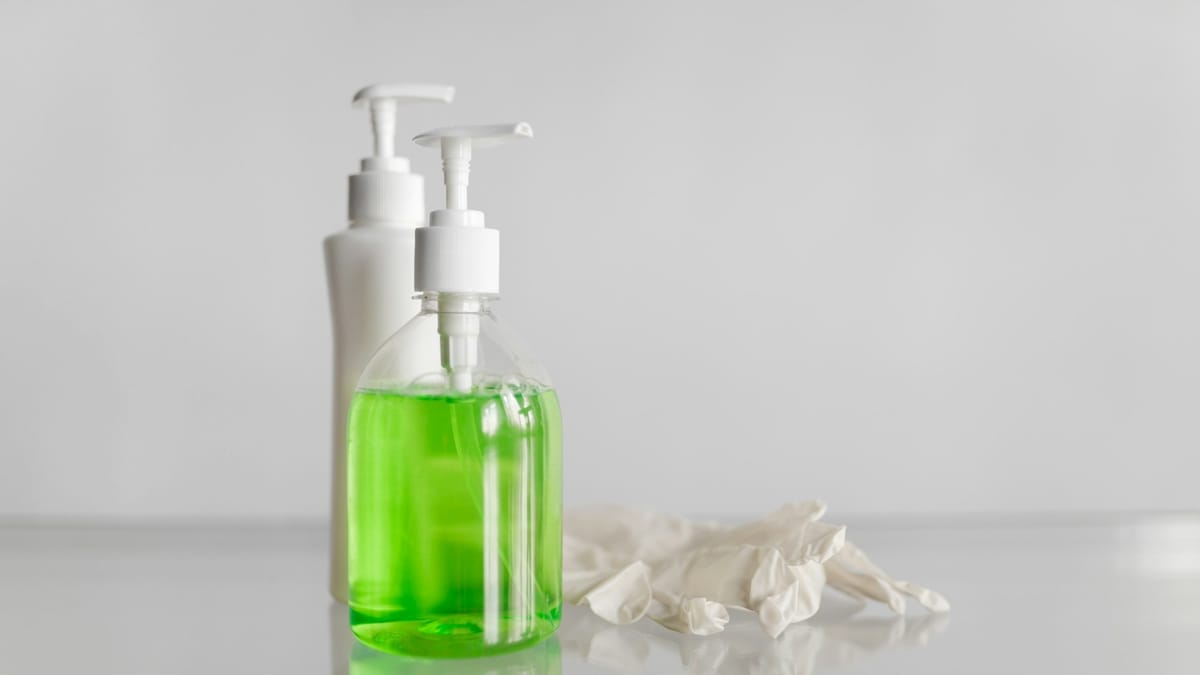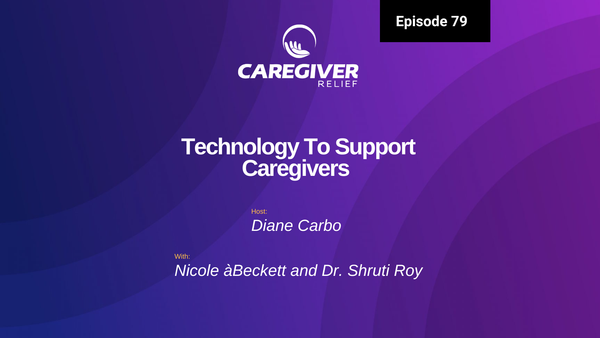How to Change Diapers for Adults
Changing diapers for adults can be a daunting task, especially for those who have limited experience with medical care. It is important for caregivers to understand the process of changing an adult's diaper

Introduction
Changing diapers for adults can be a daunting task, especially for those who have limited experience with medical care. It is important for caregivers to understand the process of changing an adult's diaper in order to provide a safe, clean, and comfortable environment for their loved one.
Diapers are essential for individuals with disabilities, elderly individuals, or those who are bedridden due to illness. Knowing how to change diapers correctly can reduce the risk of infection and skin irritation, and make sure that the person is as comfortable as possible during the process.
This post will provide an overview of how to change diapers for adults. We will cover the supplies needed, step-by-step instructions, types of adult diapers, hygiene standards, signs of distress, common questions, and more.
By the end of this post, you will have all the information you need to make adult diaper changing a safe and comfortable experience for everyone involved.
Understanding Adult Diapers
What are Adult Diapers?
Adult diapers are a type of incontinence product designed to absorb leakage and keep the skin clean and dry. They are typically used by individuals who experience urinary or fecal incontinence, including the elderly, people with disabilities, and those with certain medical conditions. Adult diapers come in various styles, including tab-style briefs, pull-up diapers, and adult pull-ups. These products are engineered to provide maximum comfort and protection, ensuring that the individual remains dry and free from skin irritation.
Who Uses Adult Diapers?
Adult diapers are used by individuals who require assistance with incontinence management. This may include:
- Elderly individuals who experience age-related incontinence, which is common as the body ages and muscles weaken.
- People with disabilities or mobility issues who may find it challenging to reach the bathroom in time.
- Individuals with medical conditions such as dementia, Alzheimer’s disease, or spinal cord injuries, which can affect bladder and bowel control.
- Caregivers who assist bedridden or immobile individuals with incontinence management, ensuring their loved ones remain comfortable and clean.
Understanding who uses adult diapers helps caregivers provide the best possible care tailored to the specific needs of the individual.
Important Supplies Needed for Adult Diaper Changing
Changing an adult’s diaper is not as simple as it sounds, and there are certain supplies and materials that caregivers will need to make sure the process is safe and effective. It is important to have all of the necessary items on hand before changing an adult’s diaper so the task can be completed quickly and easily with minimal disruption. Here are the items you will need for adult diaper changing:
- Diapers – Choose a size that is appropriate for the individual, such as pull-ups, pads, or fitted briefs. Make sure to check the expiration date before using.
- Underwear – Comfortable underwear provides extra support and helps keep the diaper in place.
- Baby wipes – Use these to clean any messes or spills. Disposable wipes are more convenient and less messy than cloth wipes.
- Disposable medical gloves – Gloves should be worn during the changing process to protect both the caregiver and individual from germs and other contaminants.
- Plastic bags – Use plastic bags to store soiled diapers until they can be disposed of properly.
- Lotion and powder – Lotion will help prevent skin from becoming dry or chafed, and powder can help control odors. Make sure to only use products that are specially designed for adult skin.
- Hand sanitizer – This should be used after changing the diaper to help prevent the spread of germs.
It is also important to note that caregivers should practice good hygiene when handling adult diapers. Make sure to wash your hands thoroughly before and after the changing process and wear gloves whenever possible. It is also essential to keep all supplies and materials in a clean, organized space so that they are readily accessible when needed. By staying organized and following proper hygiene standards, caregivers can ensure that adult diaper changing is a safe and effective process.
Preparing for a Diaper Change
Creating a Comfortable Environment
Creating a comfortable environment is essential for a successful diaper change. Here are some tips to help you prepare:
- Ensure the room is at a comfortable temperature: A warm room can help the individual feel more relaxed and less anxious during the diaper change.
- Dim the lights: Soft lighting can reduce stress and create a calming atmosphere.
- Play soothing music or white noise: Background sounds can help distract and soothe the individual, making the process smoother.
- Use a hospital bed or a bed with a waterproof mattress protector: This makes cleaning easier and ensures that the entire bed remains dry and hygienic.
- Have all necessary supplies within reach: This includes adult diapers, wet wipes, barrier cream, and disposable gloves. Being organized can make the process quicker and more efficient.
- Consider using a diaper pail or a designated area for soiled diapers: This helps reduce odors and keeps the changing area clean and tidy.
By creating a comfortable environment, you can help reduce stress and anxiety for both the individual and the caregiver, making the diaper change process easier and more efficient.
Step-by-Step Process for Changing Adult Diapers
Changing the diapers of an adult is a fairly straightforward process, however it can become much more complicated when dealing with elderly or disabled individuals. It is important to be patient and gentle in order to provide the best care possible.
Step 1: Wash and Dry Your Hands
Before touching the adult's diaper, it is important to wash your hands properly, ensuring all dirt and germs are removed. Then, use a clean dry towel to dry your hands before proceeding.
Step 2: Prepare the Area
Lay out all supplies needed for the diaper change, such as the new diaper, wipes, rash cream, and disposal bag. Make sure the area where the change will take place is clean, and that any bedding or clothing is removed from beneath the adult.
Ensure you have a clean adult diaper ready before starting the change to maintain hygiene and prevent skin irritation and leakage.
Step 3: Remove the Soiled Diaper
Being careful not to let any feces come in contact with the skin, unwrap the dirty diaper and set it aside. If the individual is unable to lift their legs to assist you, you may need to use a cloth or paper towel to cover them while you slide the diaper down.
Step 4: Clean the Skin
Use baby wipes to gently clean the skin around the genital and buttock areas, being sure to get into all the folds of skin and underneath any loose stool. If there is a lot of stool, it may be necessary to use a soft cloth and warm water to remove it.
Step 5: Apply Rash Cream
After wiping away any excess moisture from the skin, apply barrier cream to protect against irritations. Barrier creams are essential in preventing skin irritation and diaper rash caused by prolonged exposure to moisture and acidic substances. Pay close attention to areas where the skin may be particularly sensitive - such as the inner thighs - and take care to avoid getting the cream in sensitive areas, such as the eyes.
Step 6: Put on the New Diaper
Place the open diaper beneath the adult, with the sticky tabs facing up. To change an adult diaper, start at the waist and pull each side of the diaper up and over the hips, securing the tabs in the front. Pull the diaper snugly, but not too tight.
Step 7: Dispose of the Soiled Diaper
Put on a fresh pair of gloves before handling the soiled diaper. Place the soiled diaper in a sealed disposal bag and place it in an appropriate trash receptacle. Wash any reusable material used in the changing process and store it in a clean, dry place for future use.
Step 8: Provide Comfort and Reassurance
Once the diaper is changed, provide comfort and reassurance to the adult, speaking in a calm and patient manner. Ask if they have any questions, and be sure to thank them for their cooperation. This can help reduce their anxiety and make them more comfortable with the process.
The Three Common Types of Adult Diapers
When it comes to changing adult diapers, there are three common types to choose from – pull-ups, pads, and fitted briefs. Each type has different features and advantages to consider when choosing a diaper for a person in need of care.
Pull-ups
Pull-ups are similar in design to regular underwear. They generally contain mild absorbent material and are usually disposable. This makes them a great option for those who have some degree of mobility, as they are easy to put on and take off. The downside is that they may not contain enough absorbent material for heavier incontinence, so caregivers should be aware of this fact and consider other options if necessary.
Pads
Pads are similar in style to sanitary napkins and are designed to be placed within regular underwear. They tend to be more absorbent than pull-ups, but can be less comfortable since they can move around inside the person's underwear. One advantage to using pads is that they can easily be replaced when the person is still wearing their clothing.
Fitted Briefs
Fitted briefs are similar in design to a diaper and are designed to be disposable. These tend to provide the most absorbency and can be a great option for those with severe incontinence issues. They may be more difficult to put on and take off than pull-ups, however, so caregivers should use caution and be sure to check regularly to make sure the diaper fits properly.
Each type of adult diaper has its own advantages and drawbacks, so it's important for caregivers to understand the differences between them and make an informed decision when selecting a diaper for an adult in their care. Caregivers should also consider special needs such as skin sensitivity and mobility when making a decision.
Maintaining Hygiene Standards
When changing an adult’s diaper, it is essential to maintain good hygiene standards to protect the health and wellbeing of the individual. This includes methods for containing odors, preventing skin irritation, and ensuring that all materials are adequately cleaned and sanitized before being used.
To start, be sure to use a clean and dry surface for changing diapers. A bathroom counter or nearby table are generally sufficient, but make sure the surface is easy to wipe down and sanitize afterwards. Place the diaper materials on the surface - including wipes, a garbage bag, and a fresh diaper - and have them close enough to access while changing. Using disposable medical gloves during the changing process ensures cleanliness and safety.
When changing, use a gentle touch to avoid skin irritation. Be sure to wipe the soiled area from front to back and allow it to air dry for a few moments after wiping. For male individuals, point the penis downwards to reduce the likelihood of bacteria spreading from the anus. Proper hygiene and timely diaper changes are crucial to prevent diaper rash and other skin issues.
For controlling odors, use an appropriate diaper cream or ointment, and select one with medicinal properties if there is a risk of infection. For stronger odors, use a spray or liquid odor eliminator. Additionally, consider using deodorizing products or charcoal-based diaper liners for extra protection.
It is also important to wash your hands thoroughly with soap and water afterwards to prevent the spread of germs. Finally, dispose of the soiled diaper appropriately in a plastic bag sealed tightly so odors do not escape.
Understanding and Responding to Signs of Distress
When it comes to changing an adult diaper, it can be a stressful and intimidating experience for both the patient and the caregiver. It is important to be aware of signs of distress or discomfort in order to provide comfort and reassurance during the process. As a caregiver, it is your responsibility to be attentive and responsive to any signs of distress.
It is important to remember that everyone reacts differently, so it is essential to be observant and understand the individual's body language and non-verbal cues. Indicators of distress can include verbal and physical signs such as tensing of the body, restlessness, withdrawing, changes in expression or vocalizations, and even attempting to resist the process.
In order to provide comfort, it is important to make the individual feel secure and safe. Speak calmly and reassuringly, use a soft touch, and consistently provide positive feedback. Make sure to keep distractions and noise levels low, and allow plenty of time for the individual to become comfortable with the process.
If a problem arises during the changing process, it is important to respond quickly and calmly. Do not blame the individual, but rather stay focused on addressing and solving the problem. Assess the situation and take necessary steps to ensure that the individual is in a comfortable and safe environment.
Once the individual is comfortable and the issue has been resolved, it is important to stay positive and provide praise and approval. Acknowledge the individual's efforts to cooperate, and thank them for their patience and understanding.
Being aware of signs of distress and responding appropriately can go a long way towards making the diaper-changing process a positive experience for everyone involved.
Common Questions and Answers About Adult Diaper Changing
When it comes to changing diapers for adults, there are some common questions that arise. In this section, we will provide information and answer some of these questions so that caregivers can provide the best possible care.
- How often should diapers be changed? Diapers should be changed as soon as they become soiled or wet. Waiting too long to change a diaper can lead to skin irritation, infection, and other unpleasant conditions. It's generally recommended that diapers be changed at least every two to three hours, but this may vary depending on an individual's needs.
- Is it okay to reuse adult diapers? No, adult diapers should never be reused. If a diaper is soiled, it should be discarded immediately and replaced with a new one.
- What type of diaper should I use? It depends on the individual's needs. Some individuals may require pull-up style diapers while others may require fitted briefs. Speak to your healthcare provider to determine the best option.
- Are there any special considerations when changing elderly or disabled individuals? Yes, there are a few special considerations. Be sure to take extra care when handling elderly or disabled individuals, as their skin may be more delicate and prone to irritation. It is also important to remember to speak in a calm and comforting manner when changing a diaper, as this can help reduce any feelings of distress.
These are just a few of the common questions and answers about adult diaper changing. By keeping these considerations in mind, caregivers will be able to provide the best possible care for their loved ones.
In summary, learning how to change an adult's diaper is an important skill for any caregiver. It is important that the process is done with safety and respect for the individual and their needs in mind. The process of changing diapers for adults requires knowledge of the different kinds of diapers available, the supplies needed, and a step-by-step diagram of how to change the diaper safely and correctly. Additionally, important hygiene considerations also need to be taken into account. The guide has covered each of these topics in detail, and should provide readers with a good understanding of the best ways to care for an adult's needs.
Learning how to change diapers for adults can be a daunting and overwhelming task, but it's something that is necessary and incredibly important for caregivers to master. With the right supplies, the proper knowledge, and a respectful attitude, adult diaper changing can be a straightforward and rewarding experience. It's essential to remember that the process should be approached with empathy and patience, as many individuals may feel embarrassed or uncomfortable with having their diaper changed.
Above all, adult diaper changing should be done safely and with respect for the individual. Compassion and understanding are key when providing care, and following the steps outlined in this guide will help ensure that the experience is a positive one.
Caregivers play an invaluable role in the lives of those in their care, and the ability to provide them with a sense of comfort and safety through effective diaper changing is an invaluable gift. With the right tools and knowledge, anyone can become a confident and capable adult diaper changer.
Respectful Dialogue
Sometimes, adults who require diaper changing may feel uncomfortable or embarrassed. It's essential to create a safe and respectful environment for them. As a caregiver, you can start by engaging in honest and open conversation that shows empathy.
Before starting the diaper changing process, ask the individual how they are feeling and make sure they are comfortable with the situation. Listen to their concerns and answer any questions they may have. This is key to establishing a safe and respectful dialogue.
During the process, you should maintain an attitude of respect, avoid any language that could be seen as patronizing, and practice active listening. By actively listening, you show the individual that you are committed to understanding their feelings and needs.
Be sure to thank the individual for their cooperation and provide positive reinforcement, such as a smile or kind words. This will provide a sense of comfort for the individual and strengthen the bond between caregiver and care recipient.
References
When it comes to changing diapers for adults, there are many resources available to help caregivers. Here are some reliable sources to consider when researching further information on diaper changing:
- Diaper Changing for the Elderly or Disabled Adult - National Institutes of Health
- Changing Adult Diapers: A Dignified Task - Journals of Gerontology
- Diaper Changing Tips for Parents and Caregivers of Autistic Children - WebMD
- Tips for Changing Adult Diapers - Family Caregiver Alliance
These references provide valuable information on adult diaper changing, from practical advice to understanding how to provide the best care for individuals with special needs.
You might also like this article:










